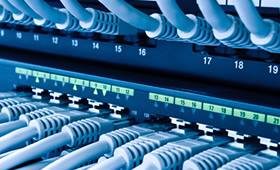Key Things To Know About Network Cabling

In this blog, we will talk about network cabling. Accelerated Technologies provides network cabling in West Palm Beach, Palm Beach, Port St. Lucie, Palm Beach Gardens, Stuart, FL, Jupiter and surrounding regions.
- Types of Cables
Network cabling comes in several types, each suited to different needs. The most common are twisted pair cables (Cat5e, Cat6, Cat6a, and Cat7), coaxial cables, and fiber optic cables. Twisted pair cables are widely used for LAN connections due to their cost-effectiveness and ease of installation, while fiber optic cables are favored for high-speed data transmission over long distances.
- Cable Categories
Twisted pair cables are categorized based on performance and speed. For example, Cat5e supports speeds up to 1 Gbps, while Cat6 can handle up to 10 Gbps over shorter distances. Cat6a and Cat7 provide even higher speeds and reduced crosstalk, making them suitable for more demanding environments.
- Cable Shielding
Shielding in cables helps prevent electromagnetic interference (EMI), which can degrade signal quality. Shielded cables (STP) are used in environments with high interference, such as industrial settings, whereas unshielded cables (UTP) are adequate for most office and residential setups.
- Cable Length and Performance
The length of a cable affects signal quality and performance. For instance, twisted pair cables generally have a maximum length of 100 meters for optimal performance. Exceeding this limit can result in data loss or reduced speed.
- Fiber Optic Advantages
Fiber optic cables use light to transmit data, offering significantly higher bandwidth and longer distance capabilities compared to copper cables. They are immune to EMI and provide enhanced security, making them ideal for backbone connections and high-speed internet.
- Installation Considerations
Proper installation is critical for optimal network performance. This includes maintaining the correct bend radius, avoiding tight twists, and ensuring connections are secure. Poor installation can lead to signal degradation, increased latency, and potential network failures.
- Future-Proofing
Choosing the right cabling is important for future-proofing your network. Investing in higher category cables, like Cat6a or fiber optics, can support future network upgrades and prevent the need for frequent replacements as technology evolves.
If you need assistance, we’re just a phone call away.
